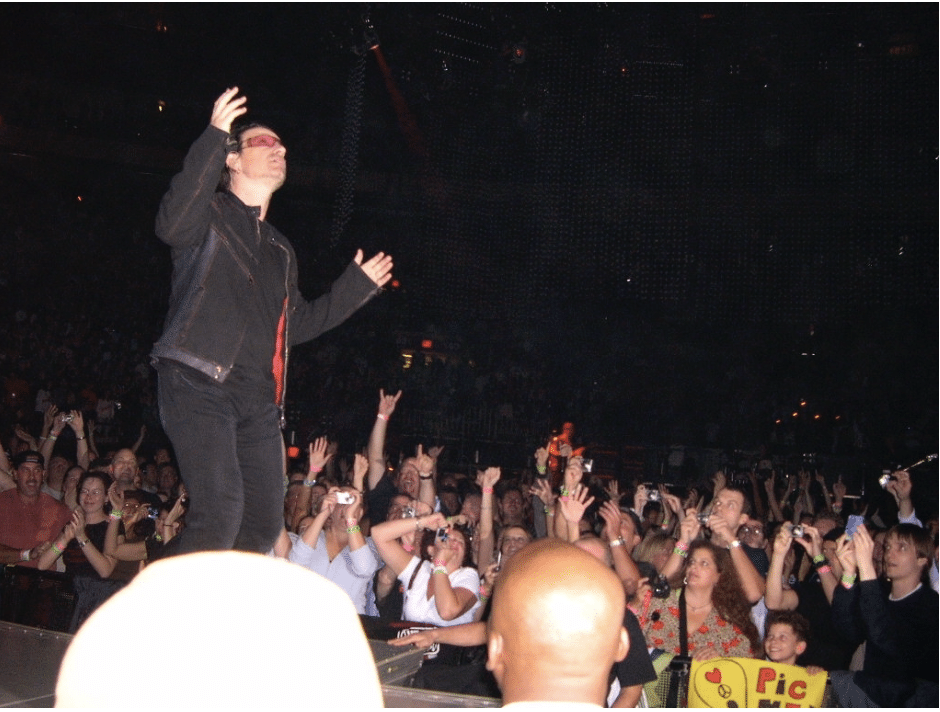Picture the scene.
I’m in the standing room area on the floor of Madison Square Garden along with 20,000 new friends.
As Arcade Fire’s “Wake Up” hits its stride, the lights go out, and we send up a roar to welcome the night’s featured attraction – U2.
90 seconds later, as “City of Blinding Lights” starts up, Bono is standing two feet in front of me. And we’re airborne.
Pure theater. Pure joy. And made more dramatic by the well-planned flow of music – from the time we walked in, until the concert began.
Planned flow and the power of music never goes unnoticed by me – a theater professional, and at the time of the concert, Circles’ future Lead Facilitator. I was similarly struck by the learnings from a piece I heard on This American Life a few years back. It highlighted the absence of an emotional response from parents to their children’s school slideshow – all because there was no soundtrack.
Music sets a mood, infuses energy, and lights a fire.
As a theater director, I give as much thought to the “load-in” music as I do the sound design during the play. Same for my years handling the studio audience load-in in my previous life in television. Am I bringing the energy up, or dampening it? What mood am I creating, intentionally or unintentionally?
We’re emotional beings, fueled by a sense of connectivity and togetherness. Music can act like dry tinder, adding a suggested emotional connotation to what it means to come together.
I love how our technology makes it super easy to grab your favorite YouTube track and play its audio in the CircleSpace. Too often, facilitators I train think they need to be the one getting it all done through words. Great facilitators embody energy, timing, and flow, and nothing jumpstarts intentional energy at the start like the right opening song. It’s like a great leading question, directing the energy and flow of the session down a pre-planned path. It’s also an opportunity to embody inclusivity and diversity. I pay attention to the composition of my group, and work to reflect it in my session’s “soundtrack”.
Music is also a “spark”, our term for content that catalyzes conversation. As an experience designer, I also find ways to build a thematic experience beginning to end, including during reflection time after a prompt is offered. Running a session on Being Present? I like Mason Jennings’ “Be Here Now.” Gathering CEOs to discuss generating impact on world events? Matisyahu’s “One Day” gets them talking. Our participants frequently mention the power of a session’s music, sharing everything from “great choice of music–opened the flow of conversation” to “the use of music and poetry to cultivate powerful themes left a strong impression on me.”
Music can be leveraged to brand the experience as well. It’s a cognitive connotation if participants hear the same track each time they enter the space. “Oh, I remember what this is.” It’s like a great walk-on moment from your favorite baseball relief pitcher. It announces the experience to come.
Because, though I may not sell out the Garden, I can still rock the house.


